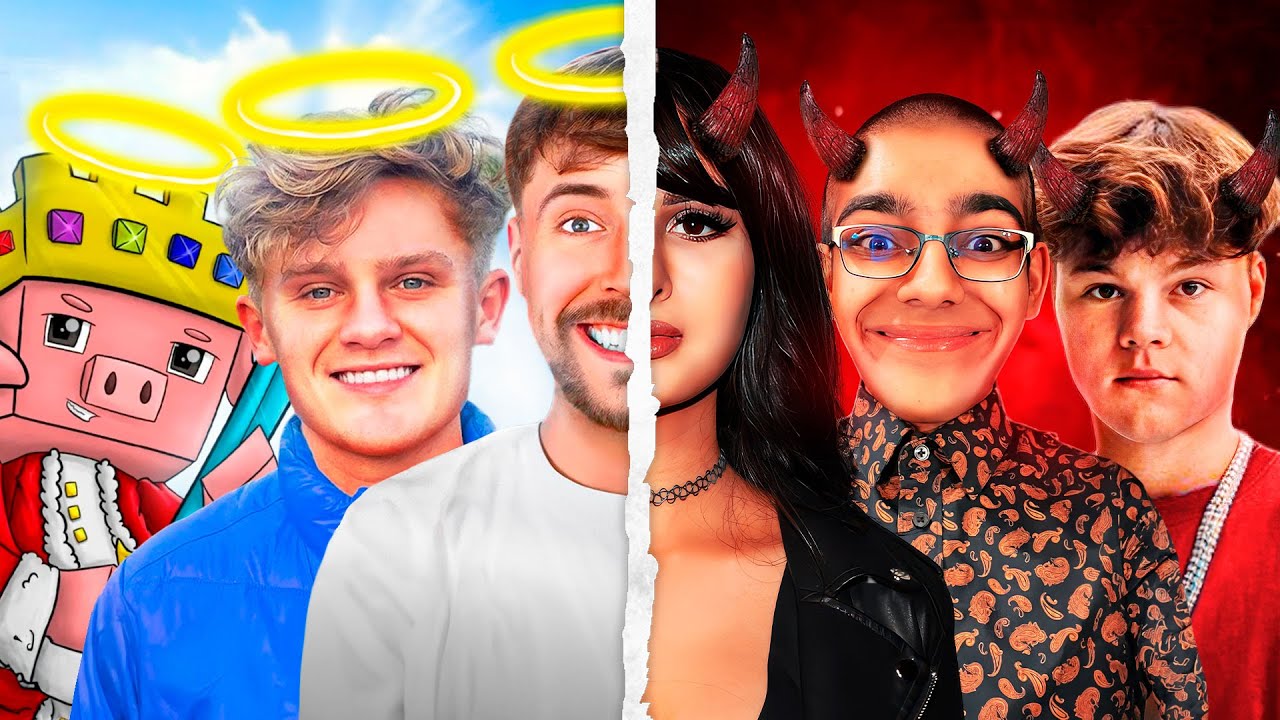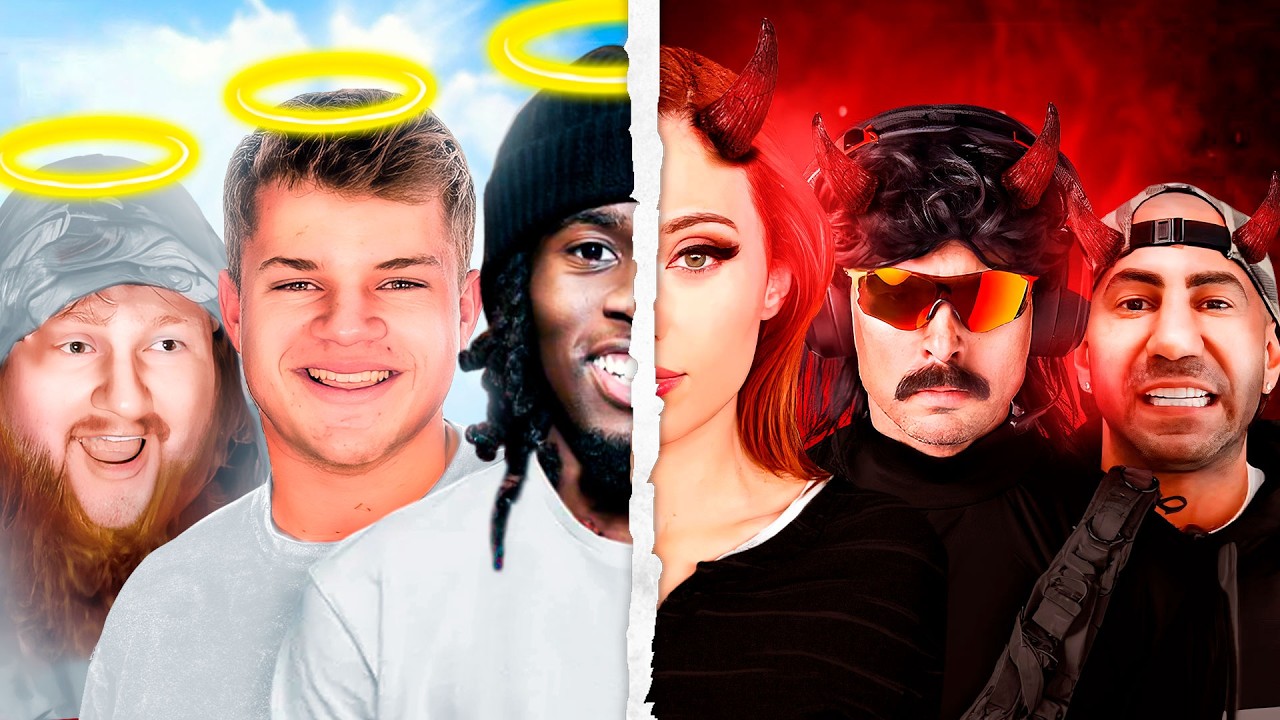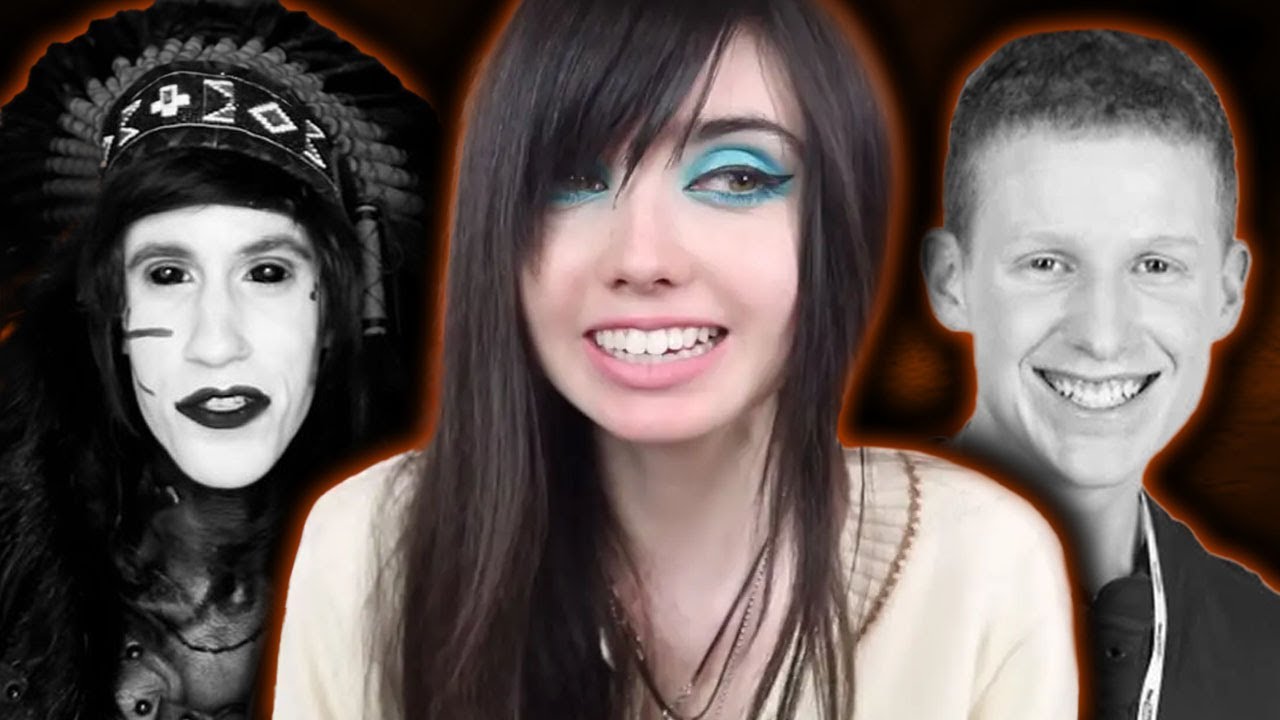YouTube is a vast platform brimming with creativity, entertainment, and, unfortunately, a fair share of drama. Every year, certain creators find themselves at the center of heated controversies, leading to viral discussions about their actions and character. These controversies often spark outrage among viewers and lead to a growing list of "most hated" YouTubers. In this blog post, we'll explore some of the main reasons creators become disliked and the impact these controversies have on their channels and communities.
Criteria for Measuring Hatred on YouTube

When we talk about "hatred" on YouTube, it's essential to understand that it’s not just about an individual’s popularity but rather how their actions and words resonate with the community. Here are some criteria that can help assess why certain YouTubers may be considered "hated":
- Moral Failures: Many controversies arise from perceived moral lapses, such as offensive behavior, scandals, or actions that go against community standards. For instance, creators who make insensitive jokes or engage in unethical practices often face backlash.
- Scandals and Drama: YouTube thrives on drama, and if a creator becomes embroiled in scandals, their reputation can take a dive. This can range from public arguments with other YouTubers to legal issues that draw media attention.
- Fan Reactions: The way a creator's fans react can significantly influence public perception. If a large section of their audience becomes disillusioned or calls for a boycott, it can amplify the backlash against them.
- Content Quality and Authenticity: As creators change their content or prioritize monetary gains over authenticity, viewers might perceive them as "sellouts." This perceived lack of integrity or quality can drive a wedge between creators and their audience.
- Response to Criticism: How a YouTuber responds to their critics can also play a crucial role. Dismissive or defensive reactions often exacerbate the situation, while genuine apologies or attempts at growth may help mend their reputation.
It's also important to note that the metrics of "hatred" can differ greatly among viewers. Some individuals may be disgusted by a particular incident while others might not find it as serious. This divergence in perspectives often leads to heated discussions in the comments section, making YouTube a lively, albeit contentious, environment.
Moreover, as social media amplifies these discussions, many creators are often subjected to an overwhelming amount of scrutiny. People take to various platforms—like Twitter, TikTok, or Reddit—to voice their opinions, creating an ever-evolving narrative that can make or break a YouTuber’s career.
At the end of the day, understanding these criteria provides a clearer picture of the complex relationship between YouTubers and their audiences. Whether you’re a casual viewer or an avid follower, it pays to recognize the factors that contribute to a creator's standing in the ever-dynamic world of YouTube.
Also Read This: How to Stream YouTube Shorts: Tips for Content Creators
Top Controversial YouTubers

When we think of YouTube, we often picture vibrant personalities creating entertaining content. However, the platform hasn't been without its share of controversies. Some YouTubers have garnered significant attention — and not always for the right reasons. Let's dive into a few of the most controversial figures on the platform and what made their actions so divisive.
- Logan Paul: Perhaps one of the most prominent figures facing backlash, Logan Paul's 2017 video from Japan's Aokigahara Forest sparked outrage worldwide. His actions were criticized for being insensitive and disrespectful towards mental health issues.
- Jake Paul: The older brother of Logan, Jake's antics often tread the line between entertaining and chaotic. From numerous run-ins with the law to accusations of being a poor role model for younger fans, he's stirred the pot more than once.
- PewDiePie: Felix Kjellberg, better known as PewDiePie, faced backlash for several instances of alleged racist comments and controversies related to his content. While he has tried to evolve his channel over the years, the shadows of these incidents often linger.
- Tana Mongeau: Known for her vlogs and storytime videos, Tana faced scrutiny when she organized the “TanaCon” convention, which ended in chaos and disappointment for many attendees. This incident highlighted the importance of accountability in the influencer world.
What these YouTubers have in common is their ability to stir conversations, whether they want to or not. Their controversies often ignite discussions about ethics in content creation, the responsibilities of influencers, and the fine line between entertainment and endorsement of problematic behavior.
Also Read This: How to Watch YouTube on TV Using Apple TV for a Bigger, Better Viewing Experience
Case Study: Popular YouTubers Who Faced Backlash

To better understand the landscape of controversies on YouTube, let’s take a look at some case studies of popular YouTubers who have faced significant backlash. Each of these situations sheds light on the complexities of being an influential figure in today’s digital age.
| YouTuber | Incident | Outcome |
|---|---|---|
| Logan Paul | Posting a video in a suicide forest | Severe backlash, loss of advertising revenue, temporary hiatus |
| Shane Dawson | Past offensive jokes and comments resurfacing | Termination of series on YouTube, criticism from fans and peers |
| James Charles | Allegations of inappropriate behavior | Loss of large sponsorships, although he later rebuilt his fanbase |
| Tana Mongeau | TanaCon disaster | Apologies, but damaged reputation and criticism from her peers |
These incidents demonstrate that even the most beloved creators can face storms of controversy. The aftermath not only affects their career trajectory but also teaches important lessons regarding ethics and responsibility. As fans of these creators, it’s essential to reflect on how we react to their actions and the kind of content we choose to support.
The world of YouTube is ever-evolving, and these case studies are just a glimpse into the complexities of being a creator in a highly scrutinized environment. By examining these controversies, we can better understand the importance of accountability, transparency, and respect in digital spaces.
Also Read This: Why Is My Like Button Not Working on YouTube? Troubleshooting Issues with Engagement Features
5. Impact of Controversy on YouTube Careers
Controversy on YouTube can be a double-edged sword. For some creators, a scandal can lead to a spike in views and subscribers, while for others, it might spell the end of their channel. It’s fascinating to observe how various YouTubers navigate the tumultuous waters of public opinion and media scrutiny.
Let’s break down some of the impacts:
- Increased Visibility: Sometimes, controversies put creators in the spotlight, leading to increased viewership. A creator like Jake Paul, despite numerous scandals, has continued to attract millions of views, particularly because people are curious about the drama surrounding him.
- Loss of Sponsorships: On the flip side, brands often distance themselves from creators embroiled in controversy. This can have serious financial repercussions. Take Logan Paul, for example; following the backlash over his infamous video in Japan, many sponsors pulled out, which significantly affected his revenue stream.
- Fan Base Division: Controversies can split a community right down the middle. Fans of a creator may either double down on their support or decide to jump ship entirely. This polarization can create a volatile environment that’s difficult to manage.
- Long-Term Reputation Damage: The effects of controversy can linger long after the initial event. A scandal may even tarnish a creator's brand permanently, making it challenging to regain trust. This is evident in the case of Tana Mongeau, whose controversies have made many skeptical about her authenticity.
- Growth Through Redemption: Interestingly, some creators have turned their controversies into opportunities for growth. After facing backlash, they shift their content or messaging, making an effort to reconnect with audiences on a more personal level. For instance, Keemstar has undergone various image changes in response to criticism.
It’s essential to remember that almost every YouTuber will face some kind of controversy at one point or another. Whether it’s a minor misunderstanding or a full-blown scandal, how they handle it can significantly influence their career trajectory. In essence, the ability to adapt and learn from these situations often determines a creator's longevity on the platform.
Also Read This: How Much Revenue Can 13 Billion YouTube Views Produce?
6. Public Perception vs. Actual Content Quality
When we think of YouTubers who have garnered negative public perception, the first thing that often comes to mind is their controversial actions. But is that perception always a reflection of the actual content quality they produce? Spoiler alert: Not necessarily!
Let’s explore this disparity:
- Content vs. Character: A creator may have a rocky personal reputation due to scandals, yet their content might still be top-notch. For instance, RiceGum often found himself in hot water for his behavior but managed to produce engaging music and entertaining videos that resonated with a vast audience.
- Perception Creation: The way a YouTuber is portrayed in social media or mainstream media can heavily influence public opinion. Sometimes, creators find themselves trapped in narratives that don’t accurately reflect their work. This can lead to unwarranted negativity. For example, many have criticized Jenna Marbles for past jokes, yet her vast library of content displayed creativity and depth.
- Viewer Bias: Fans often develop biases based on personal experiences or values, which can affect how they perceive a creator's work. A crossover between controversial actions and their content can lead viewers to dismiss quality work simply due to preconceived notions. It’s crucial to judge the content independently from the creator’s actions.
- Duration and Quality: Sometimes, a creator’s past controversies overshadow their current content. As they evolve, they may produce some of their best work, but if audiences hold onto earlier perceptions, it can be tough to gain the recognition they deserve.
Public perception is a maze of emotions, biases, and narratives. As viewers, it’s vital to peep behind the curtain and assess content on its own merits. It allows for a more balanced and informed perspective, making the YouTube landscape richer and more engaging!
Also Read This: Why Are My YouTube Shorts Not Getting Views? Troubleshooting Tips
7. The Role of Social Media in Influencing Opinions
Let’s be real: social media has become a dominant force in shaping the opinions of the masses. Whether it's about the latest trends, beauty tips, or even who to love or hate on YouTube, platforms like Twitter, Instagram, and TikTok often lead the charge. The role of these social media platforms isn't just limited to virality; they also serve as amplifiers for public sentiment.
Have you ever noticed how quickly a situation can escalate online? One small controversy can spiral into a full-blown debate within hours. This is particularly true for those individuals on YouTube who find themselves at the center of public scrutiny. Here’s how social media plays its part:
- Instant Feedback: Platforms allow fans and critics alike to share their opinions instantly. A single tweet can ignite a firestorm, pushing a YouTuber into the spotlight, whether they want it or not.
- Echo Chambers: Social media often creates echo chambers where people only see opinions that match their own. If a popular figure denounces a YouTuber, followers might just eat it up without considering the other side of the story.
- Trends and Hashtags: Trending hashtags can create momentum for movements. For instance, when a particular YouTuber is being criticized, related hashtags can rally a community against them, sometimes resulting in cyberbullying.
- Influence Through Collaboration: When well-liked creators collaborate with controversial figures, the backlash can be massive. Their followers may feel compelled to either defend or attack the relationship, leading to an even broader discussion around the YouTuber's actions.
The communication loop provided by social media can quickly turn admiration into disdain. A major controversy, like a YouTuber’s controversial prank or slip of the tongue, can lead to public outrage, calls for boycotts, and fast-tracked 'cancellation'. Influencer culture, after all, thrives on the engagement it generates — both good and bad. In many cases, even negative attention keeps the YouTuber relevant, but the mental toll can be significant. Influencers often speak about the stress and anxiety that come from being in the public eye, and the role of social media in that pressure cannot be understated.
8. Conclusion: The Ever-Changing Landscape of YouTube Fame
As we reflect on the evolving face of YouTube fame, it's important to understand that the platform is constantly in flux. One year, a sliver of controversy can launch a YouTuber into stardom; the next, the very same actions could spell their downfall. This never-ending cycle keeps creators on their toes, as they must navigate the tricky waters of public opinion.
Look at some of the most hated YouTubers of recent times; their stories serve as a cautionary tale. Today’s beloved creator could be tomorrow’s pariah. And with the speed at which social media disseminates information, even the minutest misstep can lead to catastrophe.
Here are a few key takeaways about the changing landscape:
- Adapt or Fade Away: To remain relevant, YouTubers must adapt to the whims of their audience and the wider cultural conversation. Many creators pivot their content or address controversies head-on to redeem themselves.
- Community Matters: A loyal audience can be both a blessing and a double-edged sword. While they can support you through tough times, the opposite can also hold true if the tide turns against you.
- Transparency is Crucial: Being open and honest can help mitigate backlash. Audiences often appreciate vulnerability, which can sometimes turn enemies into allies.
In essence, the world of YouTube is like a pendulum; it swings between adoration and animosity. For creators, it’s vital to remember that the journey is long and fraught with unexpected challenges. Embracing change and listening to public sentiment — both good and bad — might just be the key to navigating the unpredictable waters of YouTube fame.
 admin
admin








